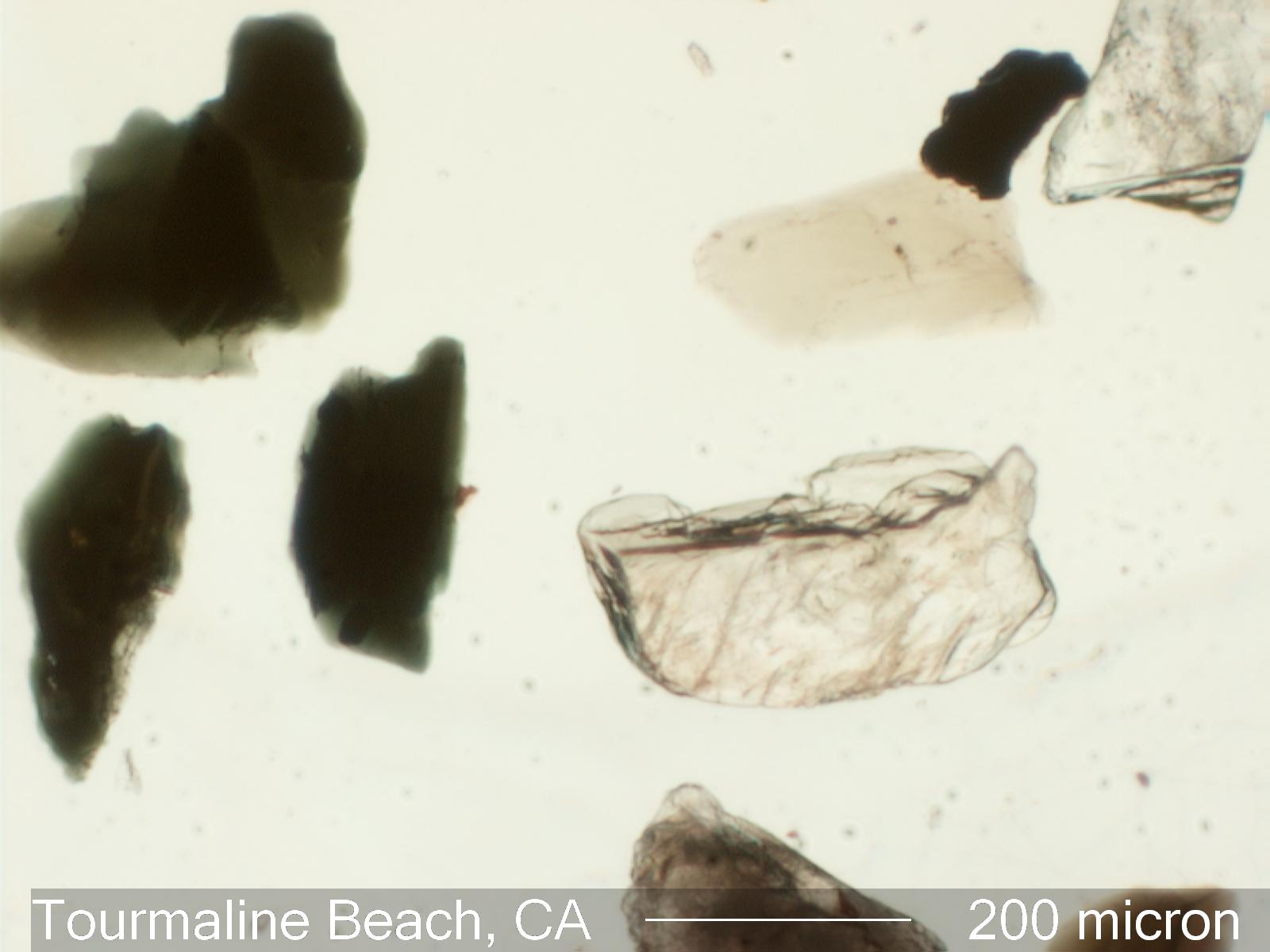Sand, Tourmaline Beach, San Diego, CA
There are three tourmaline grains in this image. The two at the lower left are quite dark in this image because the direction of the linear polarizing filter is perpedicular to the length of the grains, parallel to the omega direction. The other tourmaline grain is in the upper center and is clear because the direction of polarization in the filter is at right angles to omega and parallel to the long direction in the grain.
Transmitted E/W Linear Polarized Light Illumination
Definition/Function:
Tourmaline has the general formula of (Na,Ca)(Mg,Fe,Mn,Li,Al)3(Al,Mg,Fe)6[Si6O18](BO3)3(O,OH)3(OH,F). It is a common mineral in some granites or metamorphic deposits.
Sand is a large accumulation of small rock and/or mineral particles in the size range of from 20 micrometers to 2,000 micrometers in diameter. Sand may include small shells or shell fragments and oolitic deposits. Sand is a size and density segregated material that is the result of air or water action.


